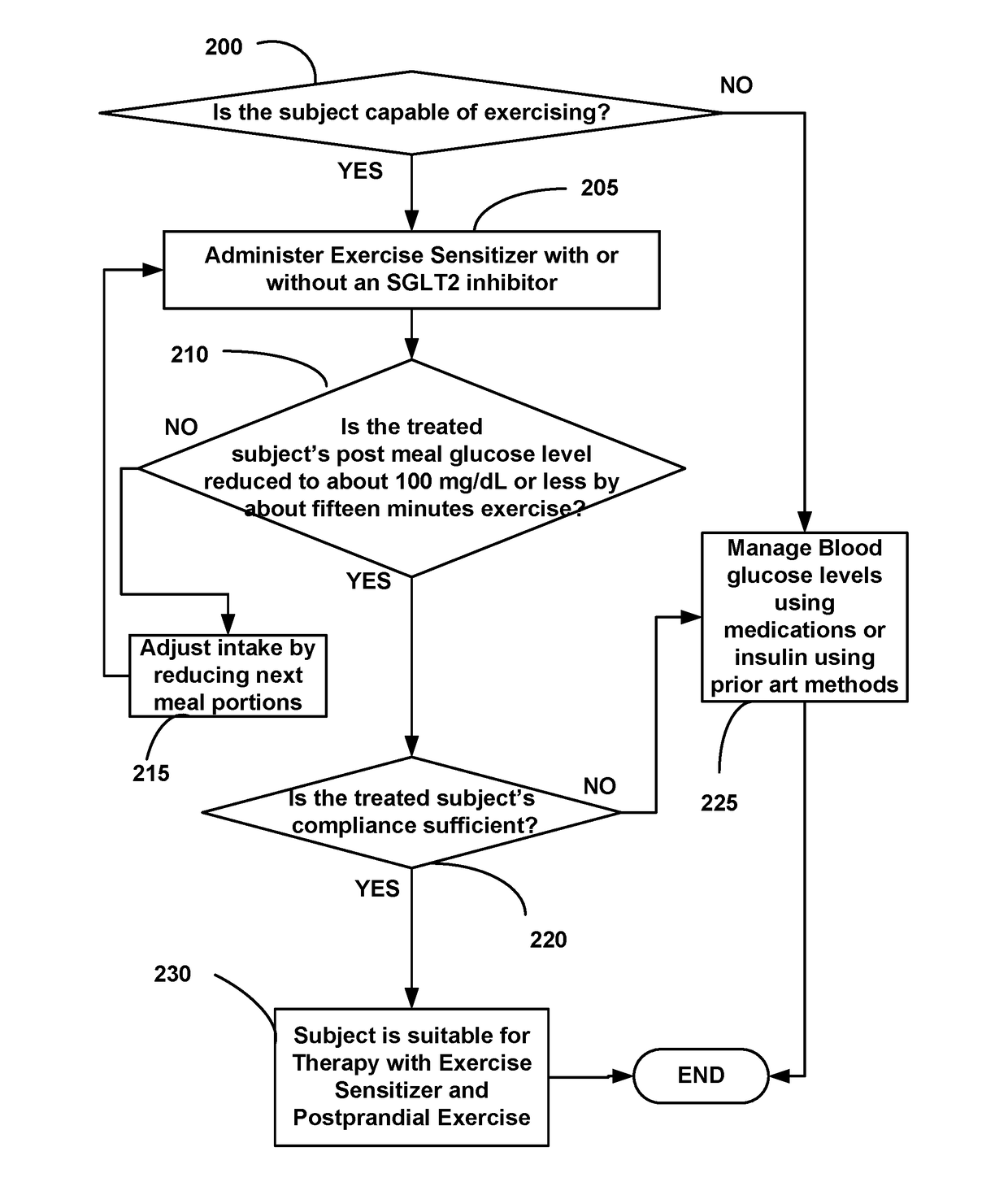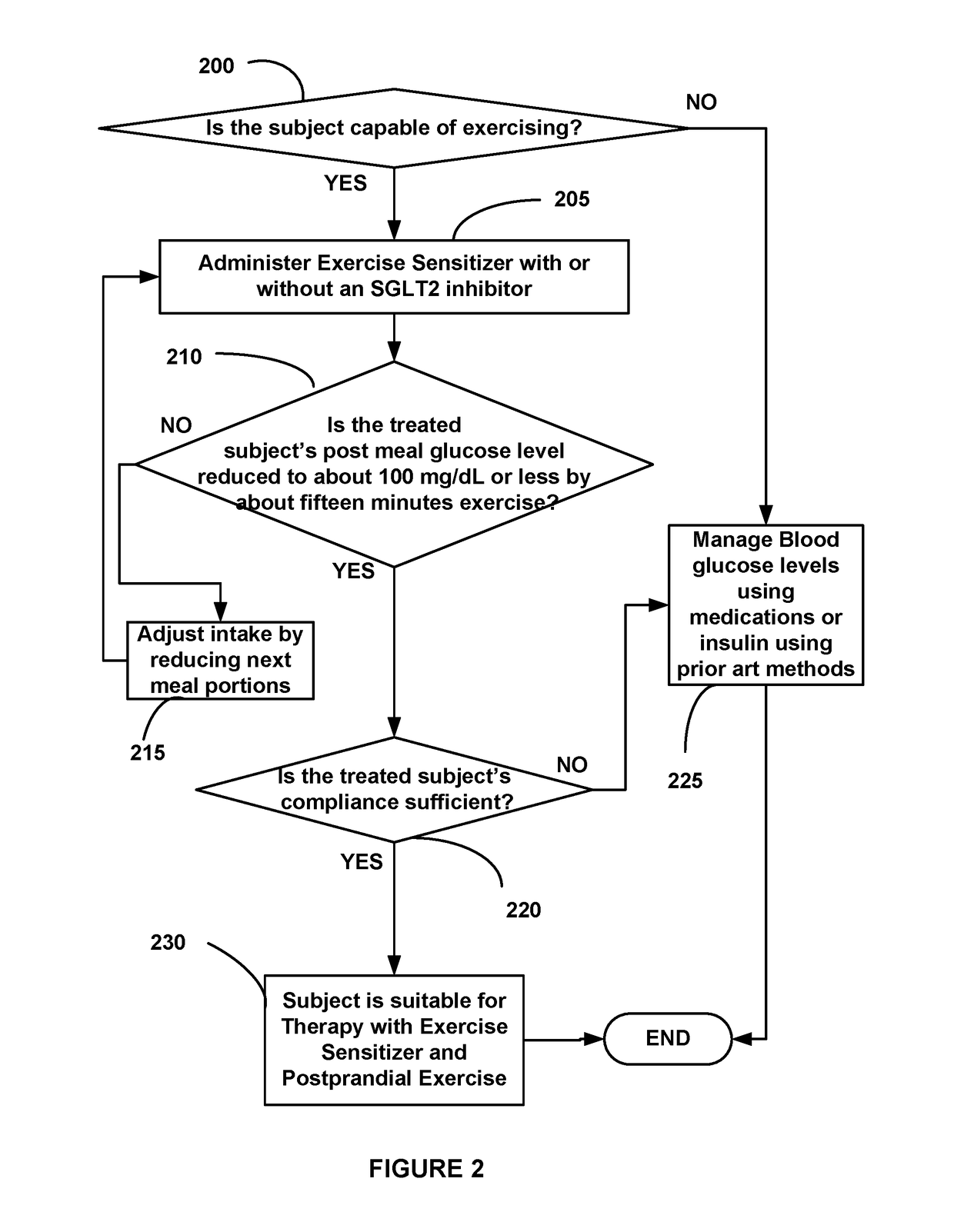Diabetes Control Using Postprandial Feedback
- Summary
- Abstract
- Description
- Claims
- Application Information
AI Technical Summary
Benefits of technology
Problems solved by technology
Method used
Image
Examples
example 1
[0071]A 54 year old man was diagnosed with Type 2 DM, dyslipidemia with overweight (BMI 29). He was initially diagnosed to have prediabetes at age of about 35 and then at age=54 was noted to have overt type 2 diabetes. At age 56 he was found to have HbA1c of about 8 with fasting glucose levels of 170 mg / dL. The family history was noteworthy with both parents and sibling having diagnosis of hypertension, T2D and obesity. Physical exam noted BMI 30.2. He had received prescription for metformin and statin upon initial diagnosis to control glucose levels and dyslipidemia but had not continued the therapy in view of being advised of the progressive nature of the disease and being discouraged by the prognosis and the failure to Metformin to sufficiently reduce the blood glucose levels—even with the doubling of the Metformin dose.
example 2
[0072]The patient of Example 1 was encouraged to track glucose levels, including postprandial glucose levels, to observe the effect of postprandial exercise and lifestyle changes. To control triglyceridemia he also started over the counter orlistat at a 60 mg dose daily with a daily multi-vitamin supplement and an additional vitamin D supplement. He had discontinued metformin and statins. Instead close monitoring of blood glucose levels was undertaken.
[0073]Postprandial exercise was initiated by the patient sua sponte after each meal as he sought to adjust the meals to control blood glucose levels. FIG. 3 shows how a hypothetical subject may adjust a diet using our method to bring about lifestyle changes. At step 300 an evaluation is made as to whether a subject's postprandial glucose level drops to about 100 mg / dL or less using about fifteen minutes of exercise. If the glucose level does not drop to about 100 mg / dL, control flows to step 305, during which one or more Exercise Sensi...
example 3
[0076]The 56 year old subject of Example 2 exercised in the postprandial state within about an hour and a half after eating but was not treated with Traditional Medications or any Exercise Sensitizer for more than a week. Following exercise, blood / plasma glucose levels dropped by about 20 mg / dL but further drops required intense exercise and the blood glucose levels stayed stubbornly high.
[0077]The descriptions in the art are consistent with this observation in that exercise required to reduce blood glucose levels is relatively intense. It is against this background that the role of Exercise Sensitizers in making even a brisk walk sufficient for reducing blood glucose levels becomes even more significant. As shown in Examples 10, 11 and 12, the level of exercise is relatively low intensity and does not take more time than what has been observed for intense exercise in the prior art using folks in prime physical shape.
PUM
| Property | Measurement | Unit |
|---|---|---|
| Time | aaaaa | aaaaa |
| Time | aaaaa | aaaaa |
| Time | aaaaa | aaaaa |
Abstract
Description
Claims
Application Information
 Login to View More
Login to View More - R&D
- Intellectual Property
- Life Sciences
- Materials
- Tech Scout
- Unparalleled Data Quality
- Higher Quality Content
- 60% Fewer Hallucinations
Browse by: Latest US Patents, China's latest patents, Technical Efficacy Thesaurus, Application Domain, Technology Topic, Popular Technical Reports.
© 2025 PatSnap. All rights reserved.Legal|Privacy policy|Modern Slavery Act Transparency Statement|Sitemap|About US| Contact US: help@patsnap.com



